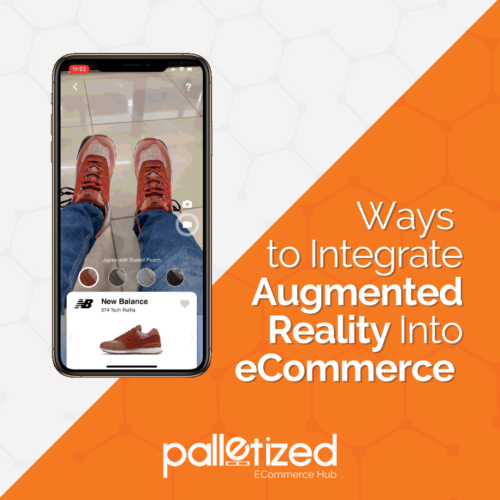The use of augmented reality in e-commerce web design gives consumers an immersive experience, allowing them to have real-time interaction with products while remaining in their own environment.
Augmented reality (AR) bridges the gap felt by customers between physical stores and online shopping experiences. A gap that’s felt even wider due to the Covid-19 pandemic restricting retail shops from being open, leaving consumers unable to enter stores and physically handle products.
AR can transform the customer’s shopping experience. That’s an exciting prospect when you think about what that can mean for business.
But how can you best apply this growing innovation to guarantee a positive transformation in customer experience?
– Item Placement:
In the eCommerce business, you’ve probably come across situations of customers buying the wrong products. It’s usually because the customer wasn’t able to physically check if the product fits their needs.
Item placement previews give the customer a view of what the item will look like in an environment of their choice. They can check what a couch will look like in their living room before buying it or if a fridge will look nice and fit in with the kitchen cabinetry.
Item placement previews provide eCommerce customers with a wide variety of options and enable them to make purchase decisions. It saves vendors unnecessary work, red tape, and inventory control in case of returned items as well. You also get to avoid negative reviews from customers if they’re unable to return the goods.
– Try-On Solutions
Virtual try-on solutions enable customers to see how the item will look on them via a screen. The customers can see if the textile is acceptable or the lipstick is the perfect color, all via their phone screens. It creates an effect resembling a person looking in the mirror and seeing what they look like using or wearing the item.
Of course, certain brands offer a home try-on facility whereby they ship samples to your door that you can try on. However, that can cost a significant amount of money. AR provides a cheaper alternative, and the fact that many brands are using it is proof of the effectiveness of AR.
– Interactive User Manuals
Luckily, user manuals are becoming more engaging and interactive. Manufacturers are now using webinar platforms and interactive prompts to make guides more exciting and educative. They are more creative and help users to understand better how the product works. But AR takes it to a whole new level.
AR user manual apps scan the product’s image and provide instructions on what to do using pointers, animations, and text. You can use AR apps to indicate components of a product and the functions for users. This makes the process of getting to know the product more interactive and far more interesting.
Bottom Line – Much, much higher conversion rates
The possibilities with augmented reality are limitless, and you can achieve pretty much anything you can imagine. Key players are already implementing AR in their businesses. This is supported by data recently released by eCommerce platform Shopify, which has claimed that products advertised with VR/AR content saw 94% higher conversion rates than products without that content.
It’s time for you to board the AR train!

